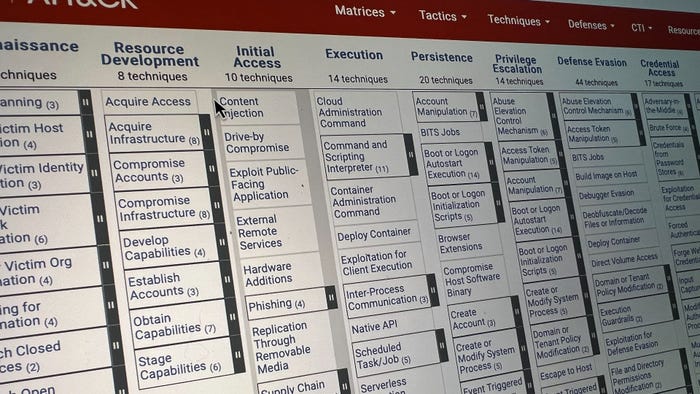The Future Of Digital ForensicsThe Future Of Digital Forensics
Last week's 10th annual IT Security Awareness Day at the University of Florida had IT workers from all over the state in attendance to hear experts from InGuardians, F-Response, Sunbelt Software, and Microsoft. Though I enjoyed every presentation, I keep thinking about one in particular -- the future of forensics, by F-Response's Matt Shannon.

Last week's 10th annual IT Security Awareness Day at the University of Florida had IT workers from all over the state in attendance to hear experts from InGuardians, F-Response, Sunbelt Software, and Microsoft. Though I enjoyed every presentation, I keep thinking about one in particular -- the future of forensics, by F-Response's Matt Shannon.Matt's presentation, "Finding The Needle: New Directions In Electronic Evidence Collection," was an insightful look at traditional forensics and the challenges forensic investigators are beginning to face. Problems include the ever-increasing size of hard drives, attackers and malware using methods to avoid touching the hard drive, and the need for faster decision-making during incident response.
I've discussed the Metasploit Framework's meterpreter payload, which is designed to be injected into an exploited process and never touch the hard drive, making it difficult to determine an attacker's actions. While that's definitely a valid concern for today's forensic investigators, it's the size of hard drives that are having a major impact on traditional forensics.
As we've discussed before, traditional forensics is pretty much the standard operating procedures for most organizations that perform hard drive acquisition and authentication prior to analysis. Essentially, it is the process of getting a computer, creating a forensic copy of the hard drive, confirming it is an exact duplicate, and then performing analysis on the copy.
The challenge of traditional forensics and larger hard drives is that the acquisition typically takes hours -- sometimes days -- depending on the size and number of drives. After authentication, forensic investigators then have to dig through the massive amount of data, which can take a significantly long time. If you've ever done full-text indexing of a large drive, then you know it's not a quick process.
Matt's take on where the forensic industry: Live forensics is going to become a necessity. The idea is that when facing such large amounts of information, a forensic investigator can collect volatile information, analyze areas of the drive to help answer questions faster, and determine whether the full hard drive needs to be acquired or if other systems need to be analyzed.
Live forensics actually works to the forensic investigators' and the businesses' advantage because investigators are stuck sitting around waiting for the acquisition process to finish before they can get started with analysis. Management is happy because the investigators can start providing answers faster (because they can get a better idea of how much this incident is going to cost them).
I don't think anyone currently performing forensics and incident response on a regular basis will be all that surprised with Matt's outlook. The signs pointing that way have been there, but the tools to actually perform live forensics easily and effectively have only begun to take off. A good example is Matt's tool, F-Response, which enables forensic investigators to perform live forensics using any standard forensic tool, like AccessData's Forensic Toolkit (FTK), X-Ways Forensics, and Guidance Software's Encase.
Now's the time to start preparing because tomorrow might be the day you get the call about a case involving a dozen computers in which each one contains one to four 1.5 terabyte hard drives and a server containing about 10 terabytes of data.
John H. Sawyer is a senior security engineer on the IT Security Team at the University of Florida. The views and opinions expressed in this blog are his own and do not represent the views and opinions of the UF IT Security Team or the University of Florida. When John's not fighting flaming, malware-infested machines or performing autopsies on blitzed boxes, he can usually be found hanging with his family, bouncing a baby on one knee and balancing a laptop on the other. Special to Dark Reading.
About the Author
You May Also Like
Shifting Left: DevSecOps in the Cloud
Feb 4, 2025Uncovering Threats to Your Mainframe & How to Keep Host Access Secure
Feb 13, 2025Securing the Remote Workforce
Feb 20, 2025Emerging Technologies and Their Impact on CISO Strategies
Feb 25, 2025How CISOs Navigate the Regulatory and Compliance Maze
Feb 26, 2025




